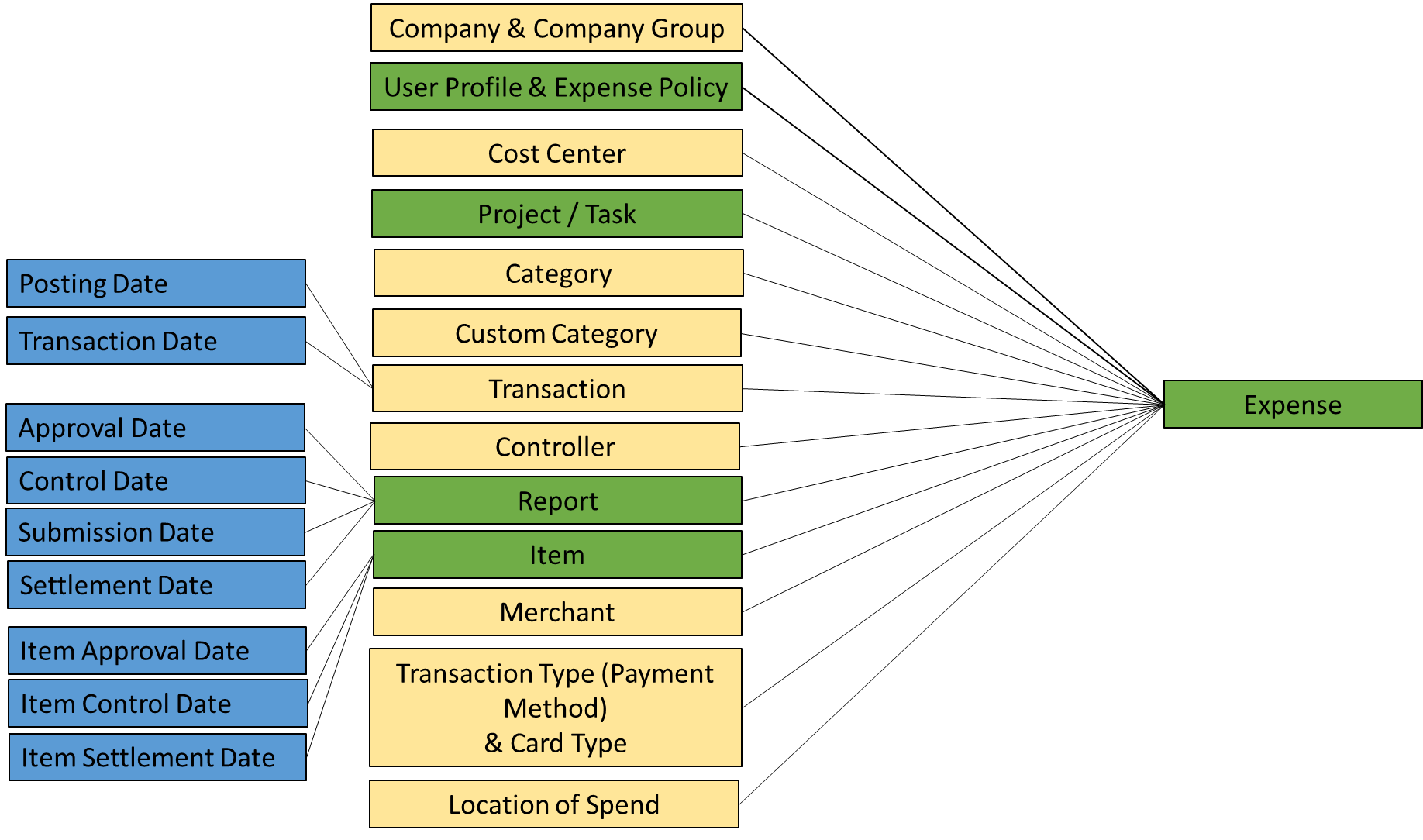What is an Insights Data Model?
The Insights Data Model organizes and analyzes expense-related data, offering a structured framework for filtering and understanding entities, dimensions, and dates. It provides insights into spending patterns, policy compliance, project expenses, and cost center allocations, enabling better decision-making, policy improvements, and expense control.

Color Classification:
Green → A dataset containing one or more measurable and aggregatable fields.
Expense: Represents the core entity for expense amounts, which are aggregatable as facts.
Report: Collects expense items for approval and control. Aggregatable facts include submission, approval, control, and settlement times.
Item: Represents individual expense entries within a transaction, allowing detailed analysis. Includes rejection reasons (up to 5 per approver/controller) and a "Number of Rejections" fact for tracking.
Transaction: Captures merchant name, city, and transaction counts, including averages and totals.
User Profile & Expense Policy: Represents employees and their compliance with expense policies. Primarily dimensional but includes two aggregatable fields: "User Info Num 1" and "User Info Num 2."
Yellow → A dimension or dataset containing categorical fields.
Company & Company Group: Represents the organizational hierarchy, grouping companies under a company group.
Cost Center: Defines company subdivisions, typically representing departments.
Project/Task: Organizes projects and their associated tasks, serving as company subdivisions.
Category/Custom Category: Classifies products at the item level, with options for custom categorizations.
Controller: Identifies the user profile responsible for item control.
Merchant: Stores merchant details at the item level.
Transaction Type & Card Type: Categorizes payment methods and card types at the transaction level.
Location of Spend: Specifies the transaction country, stored at the transaction level.
Blue → A dimension representing date-related fields.
Transaction Date: The date the transaction occurred.
Posting Date: The date the transaction was recorded in the system.
Submission Date: The most recent date a report was submitted for approval.
Approval Date: The most recent date an item received approval.
Control Date: The most recent date an item was reviewed by a controller.
Settlement Date: The date an item was finalized for settlement post-approval or control.
